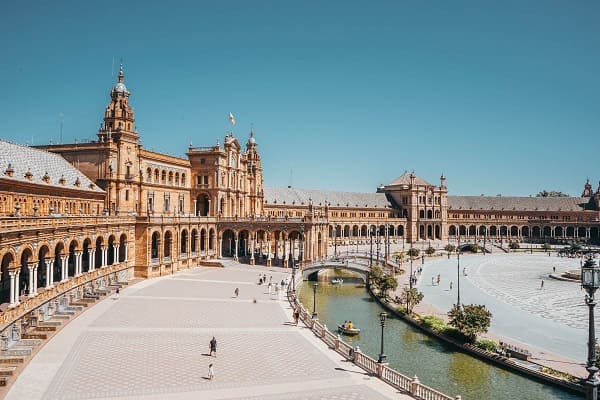Beyond the charms that the city of Seville shows us, there is also a lot to see and know inside. This city, which has been inhabited since the time of the Phoenicians, preserves within itself the buildings that each of the towns that inhabited it left behind. All these civilizations built at different levels, as archeology has been able to demonstrate. Thus, at the underground level, the city of Seville has a large number of ancient secret passages that will surprise you, some of them can even be visited. Dare to explore the depths of the Andalusian capital and get to know them. Below we will tell you everything about it.

The 10 main passageways under the city of Seville
The Roman temple on Mármoles Street and the Antiquarium de las Setas are clear evidence of how an entire ancient town lies beneath the lands of Seville. Historians have mentioned how an underground passage connects the Alcázar and Triana with the Torre del Oro. It is also known how the Romans during the Empire built tunnels that served as sewers. Of all these examples, there are many passages meters underground that we can find in Seville:
1 – Argote de Molina Passage:
Previously known as Witches' Alley between the 16th and 17th centuries. This passage is located below the current Don Raimundo restaurant.
2 – Passage on Abades Street:
Due to some civic works in the year 70, studies on this tunnel were deepened. It is believed that in the 19th century a slave took advantage of the passage to escape her captor during the distraction of a carnival.
3 – Cave of Hercules:
It is one of the most popular underground passages and its original extension extended from the Church of Santa María la Blanca to the popular Mateos Gago street.
4 – Roman cistern:
Under the Plaza de la Pescadería, just 60 centimeters from the surface, there is a hydraulic structure that is 4 meters deep. This structure is made up of a total of three naves, each measuring 41 meters by 5 meters. It was discovered in 2006. This structure dates back to the 2nd century when it served to distribute water. Visits to its interior have been enabled on rare occasions.
5 – Passageways of the Real Alcázar:
This fortress had its own passageways. Although their main purpose was to be used for military and defense actions, they were also used for other purposes. Pedro I El Cruel used the underground passages for his affairs with his lover María de Padilla.
6 – Torneo Street Passages:
This street has several underground passages that have been investigated and documented by the chronicler Don Manuel de la Cruz.
7 – Galleries of the Jewish quarter houses:
Under the Las Casas de LA Judería hotel complex there is a huge underground tunnel that connects and connects its 27 homes that occupy 18,000 square meters.
8 – River tunnels:
This information is not confirmed, but there is a popular belief among Sevillians that there were two tunnels that joined the two ends of the river. One of these started from the Humeros, and the second from the Hospital de las Cinco Llagas to the Monasterio de la Cartuja.
9 – Passages between crypts:
The chronicler Jose María de Mena confirmed the existence of tunnels under the Church of San Roque in the Plaza de Carmen Benítez. The route started from the crypts located below the church and reached the railway area of Campo de los Mártires (currently the site of the Santa Justa Station). This is one of the largest underground passages discovered in Seville, thanks to its two meters wide and two meters high.
10 – Cathedral Tunnels:
Under the lands of the Cathedral there are galleries that correspond to the Muslim era in the Iberian Peninsula. These passages connect the location of the Cathedral with García de Vinuesa Street, previously Calle del Mar. It is popularly believed that they linked the town hall with the San Miguel school and originated in the drains of the fountain located in the Patio de los Naranjos .

Conclusion:
In the city of Seville, in addition to its visible charm, there is an underground world that keeps the vestiges of various civilizations throughout the centuries. These secret passageways offer a fascinating window into the city's history. From ancient Roman tunnels to passages used by royalty, these underground spaces tell stories of love, intrigue and escape. Places such as the Argote de Molina Passage, the Roman Cistern and the Passages of the Real Alcázar reveal a hidden history that Sevillians and visitors can explore today. This network of passageways represents a tangible connection with the past and adds an enigmatic dimension to the rich culture of Seville.


